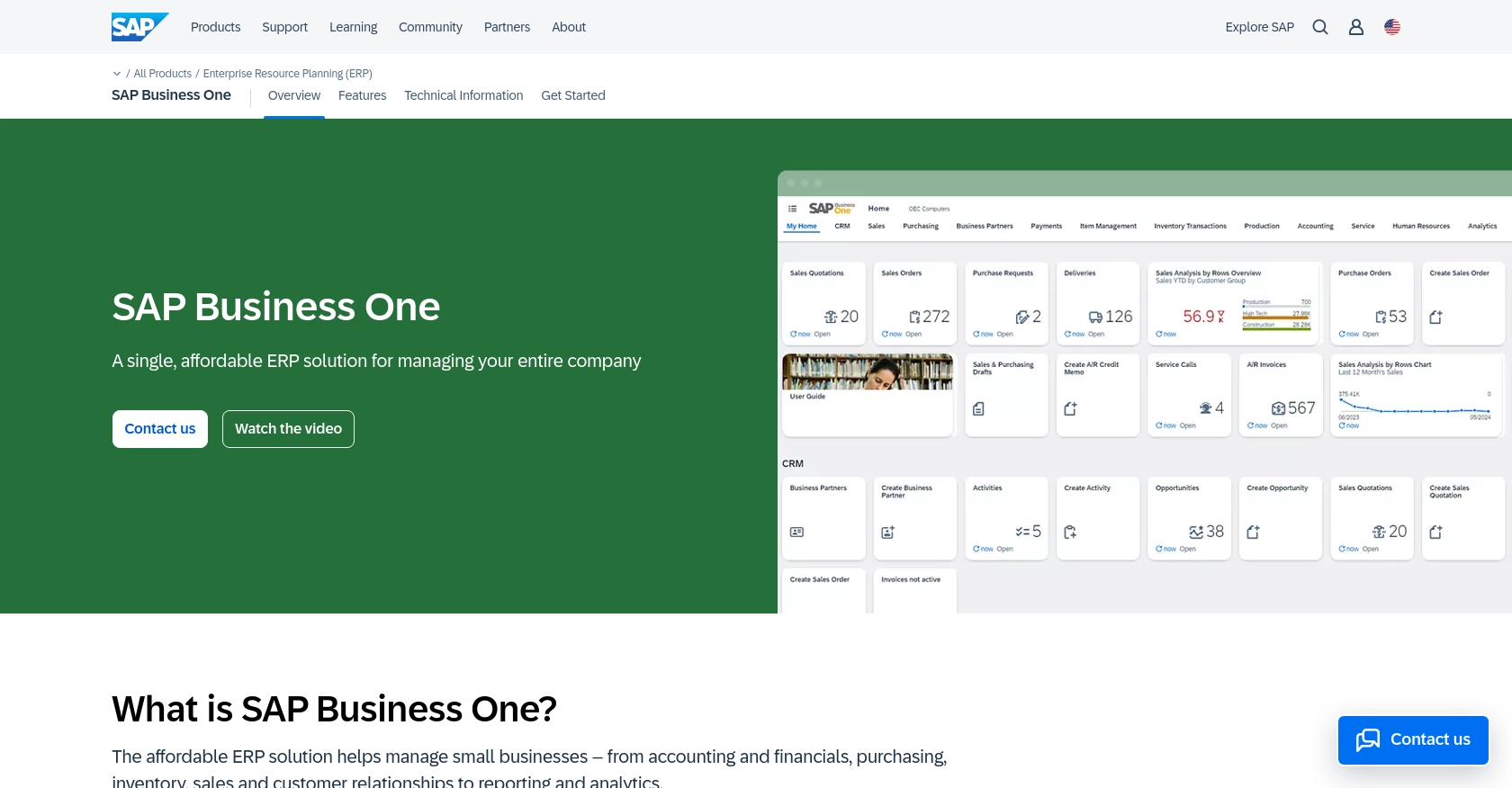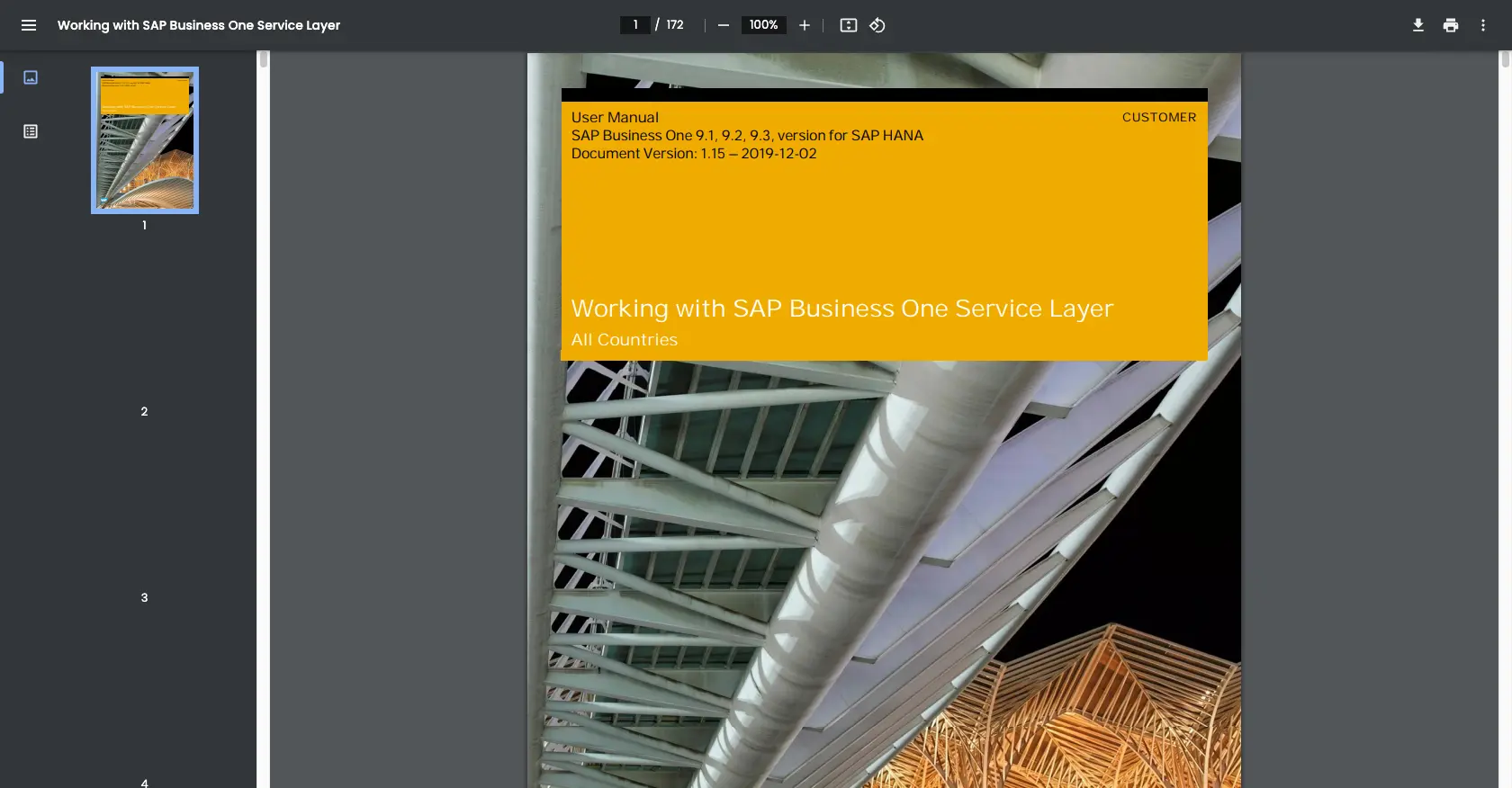Using the Sap Business One API to Get Invoices (with Python examples)

Introduction to SAP Business One API
SAP Business One is a comprehensive enterprise resource planning (ERP) solution designed for small to medium-sized businesses. It offers a wide range of functionalities, including financial management, sales, customer relationship management, and inventory control, all integrated into a single platform.
Developers often need to interact with SAP Business One's API to automate and streamline business processes. One common use case is retrieving invoice data to integrate with financial reporting tools or to automate billing processes. By accessing invoice data through the SAP Business One API, developers can ensure that financial information is up-to-date and accurately reflected across various systems.
Setting Up a Test/Sandbox Account for SAP Business One API
Before you can start interacting with the SAP Business One API, you'll need to set up a test or sandbox account. This environment allows you to safely experiment with API calls without affecting live data, making it ideal for development and testing purposes.
Creating a SAP Business One Sandbox Account
To begin, you'll need access to a SAP Business One sandbox environment. If your organization already uses SAP Business One, you can request access to a sandbox instance from your system administrator. If not, you may need to contact SAP or a certified SAP partner to set up a trial or demo environment.
Configuring OAuth Authentication for SAP Business One API
The SAP Business One API uses a custom authentication method. To authenticate your API requests, you'll need to create an application within your sandbox account. Follow these steps to configure authentication:
- Log in to your SAP Business One sandbox account.
- Navigate to the Service Layer section in the administration panel.
- Create a new application by providing necessary details such as the application name and description.
- Once the application is created, you'll receive a Client ID and Client Secret. Keep these credentials secure as they are essential for making authorized API calls.
Generating API Keys for SAP Business One
In addition to OAuth credentials, you may need to generate API keys for certain operations. Here's how you can obtain them:
- Within the SAP Business One administration panel, navigate to the API Management section.
- Select Create API Key and specify the permissions required for your application.
- Once generated, copy the API key and store it securely for future use.
With your sandbox account and authentication credentials set up, you're ready to start making API calls to retrieve invoice data from SAP Business One. For more detailed information, refer to the official SAP documentation: SAP Business One Service Layer Documentation.

sbb-itb-96038d7
Making API Calls to Retrieve Invoices from SAP Business One Using Python
To interact with the SAP Business One API and retrieve invoice data, you'll need to use Python, a versatile programming language known for its simplicity and readability. This section will guide you through the process of setting up your environment, writing the necessary code, and executing API calls to access invoice information.
Setting Up Your Python Environment for SAP Business One API Integration
Before you begin coding, ensure that you have Python installed on your machine. This tutorial uses Python 3.11.1. Additionally, you'll need the requests library to handle HTTP requests. Install it using the following command:
pip install requestsWriting Python Code to Retrieve Invoices from SAP Business One
With your environment ready, you can now write the Python script to fetch invoice data from SAP Business One. Create a file named get_invoices.py and add the following code:
import requests
# Define the API endpoint and headers
endpoint = "https://your-sap-business-one-instance.com/b1s/v1/Invoices"
headers = {
"Content-Type": "application/json",
"Authorization": "Bearer Your_Token"
}
# Make a GET request to the API
response = requests.get(endpoint, headers=headers)
# Check if the request was successful
if response.status_code == 200:
invoices = response.json()
for invoice in invoices['value']:
print(f"Invoice ID: {invoice['DocEntry']}, Total: {invoice['DocTotal']}")
else:
print(f"Failed to retrieve invoices. Status Code: {response.status_code}")
Replace Your_Token with the token obtained from your SAP Business One sandbox account. This script sends a GET request to the SAP Business One API to retrieve invoices and prints their IDs and totals.
Executing the Python Script and Verifying Results
Run the script using the following command:
python get_invoices.pyIf successful, the script will output the invoice IDs and totals. You can verify the retrieved data by comparing it with the invoices listed in your SAP Business One sandbox account.
Handling Errors and Troubleshooting API Calls
When making API calls, it's crucial to handle potential errors. The SAP Business One API may return various status codes indicating different issues. For example:
- 401 Unauthorized: Check if your token is valid and has the necessary permissions.
- 404 Not Found: Ensure the endpoint URL is correct.
- 500 Internal Server Error: This may indicate a server-side issue; try again later or contact support.
For more detailed error information, refer to the official SAP documentation: SAP Business One Service Layer Documentation.
Conclusion and Best Practices for Using SAP Business One API
Integrating with the SAP Business One API to retrieve invoice data can significantly enhance your business processes by ensuring seamless data flow between systems. By following the steps outlined in this guide, you can efficiently set up your environment, authenticate your requests, and handle API interactions using Python.
Best Practices for Secure and Efficient API Integration
- Secure Storage of Credentials: Always store your API credentials, such as tokens and API keys, securely. Consider using environment variables or secure vaults to prevent unauthorized access.
- Handle Rate Limiting: Be aware of any rate limits imposed by the SAP Business One API. Implement retry logic and exponential backoff strategies to handle rate limit errors gracefully.
- Data Transformation and Standardization: Ensure that the data retrieved from the API is transformed and standardized to match your application's requirements. This will help maintain consistency across systems.
Streamlining Integrations with Endgrate
While integrating with SAP Business One API can be straightforward, managing multiple integrations can become complex. Endgrate offers a unified API solution that simplifies the integration process by providing a single endpoint to connect with various platforms, including SAP Business One.
By leveraging Endgrate, you can save time and resources, allowing your team to focus on core product development. Explore how Endgrate can enhance your integration strategy by visiting Endgrate.
Read More
Ready to get started?
